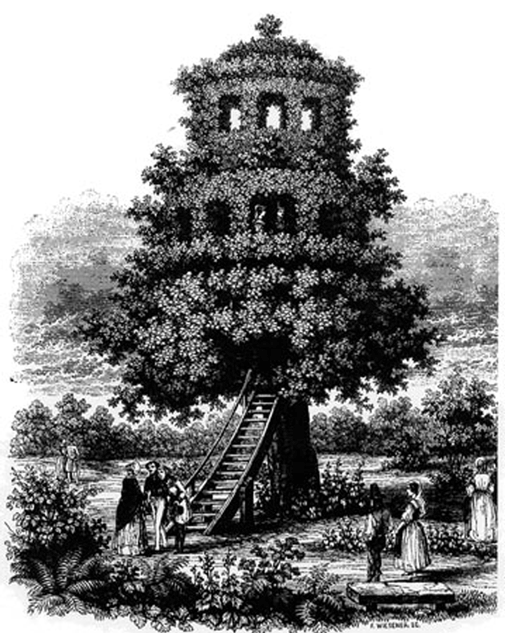
Richard Weston's images of crystals and minerals reveal the intricacies of their structures in unprecedented detail. An ode to natural design and perhaps shows our own abilities of design as a process of replicating what seems to be chaotic order. It's these type of images that we can envision the spectrum of infinities, both small and larger then our own scale. The markings we leave on the landscape don't stray from the patterns of natural geology or fractals. Our cities merely Tourmalines to larger beings looking under a microscope, our oceans agates. We've yet to detect it, but as we discover space through new lenses, the same "design" patterns will appear in similar form at continuous grander scales.
Why do these design consistencies exist? Hell if I know. But by chance, if you were to intimately understand your scale level, the principles of how shapes and lines are formed, then possibly you gain insight at any reach.
{(Above Image) Paesina stone comes from Tuscany in Italy, particularly from Florence. It is a silty limestone, formed during the Cretaceous period. The stone is marked by a 3D network of fine cracks. Groundwater diffuses through these cracks, bringing with it oxides of various minerals. These create the intricate patterns and colours, which often look like landscapes, as in this example.}
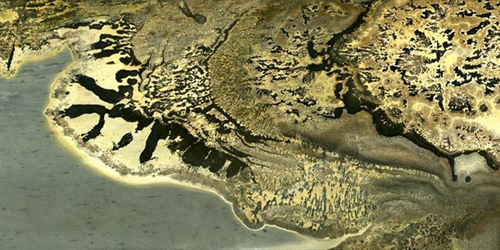
{These are a form of limestone, but enriched by dendrites. The dendrites are formed from water-borne minerals, most commonly manganese. These are carried into the stone in solution, between the bedding planes.}
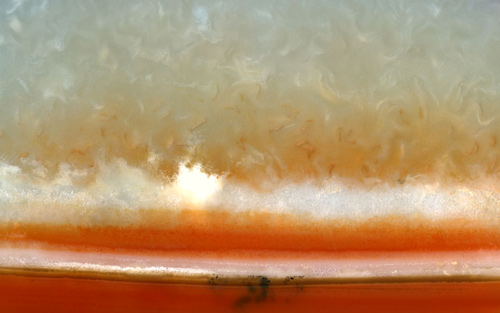
{Agate is a type of chalcedony; that is, it is made of two minerals, quartz andmoganite, that have interleaved together.
Quartz is formed of crystals of silica, SiO2. The crystals can come in different sizes: in the case of agate, they are so small they can only be seen under microscopes.
Moganite is also formed of silica, but the atoms are in a different crystal structure.
In this banded agate, most of the rock void in which it formed was filled by a later infusion of gel. This crystallised as horizontal bands. Various elements are responsible for the colours in agates, but the blazing red and oranges are most likely due - as in artists' pigments - to cobalt.}
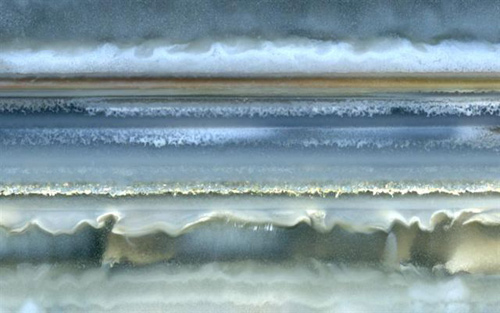
{Most agates occur as nodules in volcanic rocks or ancient lavas. Originally, volatile gases in the molten lava formed small cavities. Afterwards, silica (or similar compounds) formed in layers on the walls, eventually filling the space. Because the silica is deposited in layers, the agate has a banded or striped appearance.}

{Tourmaline is another silicate mineral, like quartz and agate, but it is laced with many other chemicals.
These chemicals may include aluminium, iron, magnesium, sodium, lithium, or potassium. Depending on which ones are present, the crystals can be many different colours.
Usually, iron-rich tourmalines are black, shading to bluish-black and deep brown. By contrast, magnesium-rich varieties are brown to yellow, and lithium-rich tourmalines can be almost any colour. Colourless tourmalines are also sometimes found. This image was taken from a jet-black specimen.}
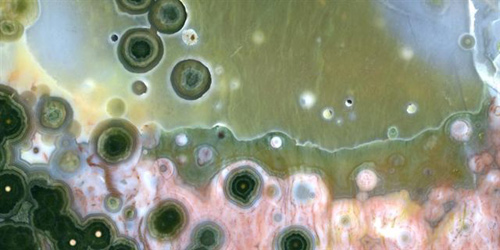
{Jasper is another form of silica. It is opaque and can be almost any colour, though red, yellow and brown are common.
Ocean jasper is a particular type of orbicular jasper, a variety containing many small spheres or "orbs". The term "ocean jasper" refers to orbicular jasper obtained from the shores of northeast Madagascar: it is a trade name.
Like many gemstones, ocean jasper has been seized upon by mystical types who believe it has magical powers: one website claims it "lifts negativity so one can fully appreciate blessings".}
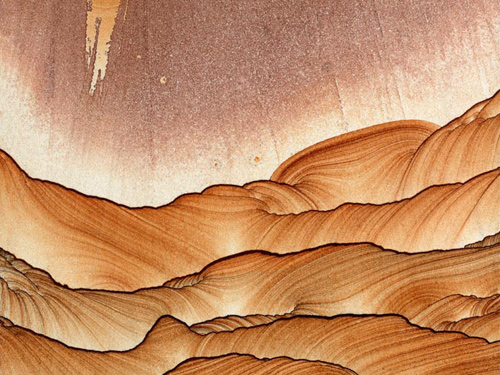
{Sandstone is a sedimentary rock, composed mainly of sand-sized mineral or rock grains. The grains are typically quartz and/or feldspar - the most common minerals in the Earth's crust.}

{Rhodochrosite is made of crystals of magnesium carbonate. The pure form is rose red, but this is rare. Impure varieties are pink or brown. This specimen is from a stalactite, of a kind found uniquely in an old Inca silver mine in Catamarca, Argentina. It has been cut in cross-section, revealing concentric bands of light and dark rose-coloured layers.}
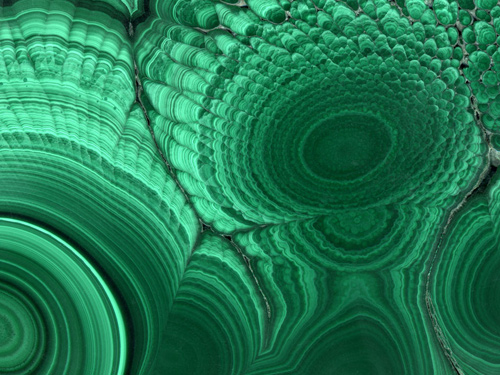
{Malachite is another carbonate mineral, like rhodochrosite; specifically, it is copper carbonate. It is often formed by when copper ores, found around limestones, are weathered. It often forms stalacmites.
Like many copper compounds, it is green. As a result, it was used as an artist's pigment until around 1800. It has been mined for over 3,000 years at the so-called "King Solomon's Mines" in Israel.}
{All images: EarthUK}


